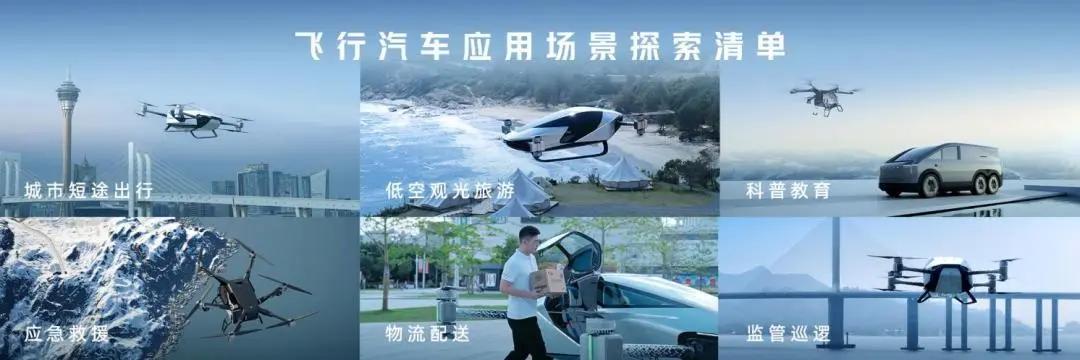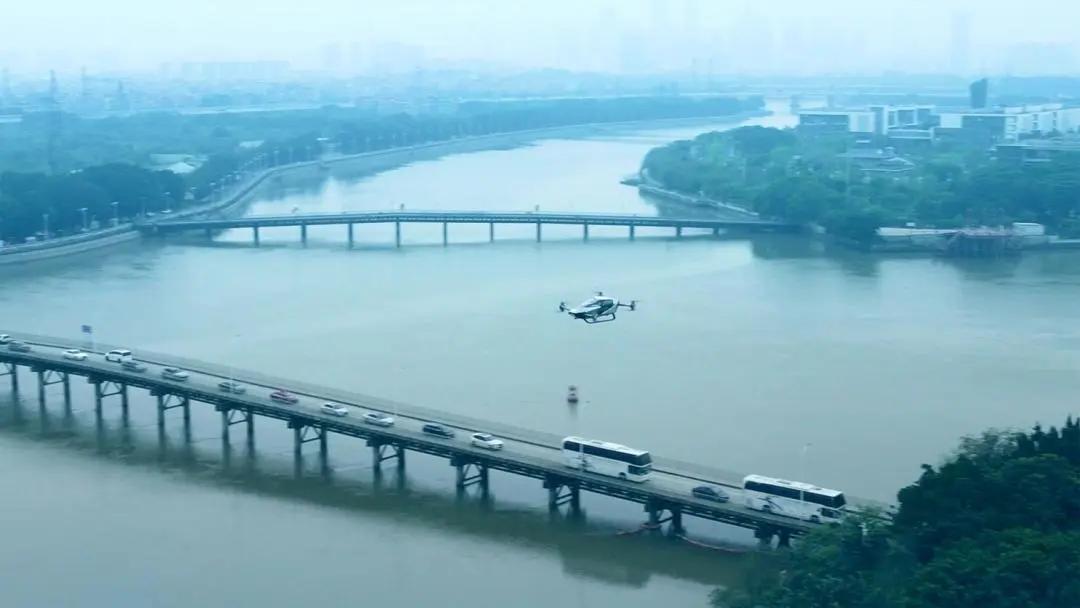Guangzhou University City to build low-altitude economic demonstration island
 In March this year, the Ministry of Industry and Information Technology, the Ministry of Science and Technology, the Ministry of Finance, the Civil Aviation Administration of China and other four departments jointly issued the “Implementation Plan for Innovative Application of General Aviation Equipment (2024-2030)”, encouraging local governments to integrate low-altitude infrastructure into urban construction planning and strengthen the connection with urban transport systems.
In March this year, the Ministry of Industry and Information Technology, the Ministry of Science and Technology, the Ministry of Finance, the Civil Aviation Administration of China and other four departments jointly issued the “Implementation Plan for Innovative Application of General Aviation Equipment (2024-2030)”, encouraging local governments to integrate low-altitude infrastructure into urban construction planning and strengthen the connection with urban transport systems.
The Guangzhou University City Management Committee initiated and established the first low-altitude economy expert think tank, which absorbed 125 low-altitude economy technical personnel and industry experts from universities, research institutes, key enterprises and other units to provide advice for the development of low-altitude economy. The Guangzhou University City Innovation and Entrepreneurship Promotion Center, Sun Yat-sen University New Mobile Travel Future Industry Science Park and Xiaopeng Huitian jointly initiated and set up the Guangzhou University City Low-altitude Economy Industry Technology Innovation Center, which adopts the “government + scientific research institutions + leading enterprises” mode, focusing on the technological innovation and industrial development in the field of low-altitude economy, and Guangzhou Subversive Technology Innovation Center as a strategic partner.
On April 18, the People’s Government of Panyu District, Guangzhou and Xiaopeng Huitian signed the Framework Agreement on Jointly Promoting the Application of Flying Vehicles. The two sides will cooperate in establishing a think tank of low-altitude economy experts, carrying out flying vehicle infrastructure construction, exploring flying vehicle application scenarios, promoting low-altitude disruptive technology project cooperation and other aspects, and jointly build Guangzhou University City into the first low-altitude economy application demonstration island in China. The Traveler X2 also conducted a flight demonstration, taking off vertically from the Youth Innovation Hub takeoff point in Guangzhou University City, and returning to land after going around the green belt along the river, using the automatic driving mode.
Panyu District will jointly release the list of flying vehicle application scenarios, and announce the start of flying vehicle infrastructure construction. The first batch of plans is to build four flying vehicle takeoff points in the university city, supporting flying vehicle takeoff, parking, energy replenishment, communications and other infrastructure, laying a solid foundation for the next step of “low-altitude + commuting”, “low-altitude + tourism”, “low-altitude + emergency” and other application demonstrations, and building Guangzhou University City into the first low-altitude economy application demonstration island in China.

In the face of the problem of how to apply flying cars that everyone is most concerned about, based on the investigation and analysis of the future demand for B and C terminals, Guangzhou Panyu District and Xiaopeng Hutian jointly issued a list of flying car application scenarios, including urban short-distance travel, low-altitude sightseeing tourism, science education, emergency rescue, logistics distribution, regulatory patrol and other scenarios.
At the same time, Guangzhou Panyu District called on related enterprises in the fields of cultural and sports tourism, emergency safety, public services and other fields to jointly participate in the establishment of the future “low-altitude +” ecology, combined with the first batch of scene lists released. From exploration to demonstration application, a new form of manned air traffic has been cultivated, and the “low-altitude +” application scenario has helped the low-altitude economy of Panyu District to fly high and far.

Combined with the road quality improvement project of the 20th anniversary of the construction of Guangzhou University Town, this plan is guided by intelligence, digitalization and green, and starts the construction of flying car infrastructure in Guangzhou University Town. The first batch of the project plans four take-off and landing points in Guangzhou University Town Qingchuanghui, Guangdong Science Center, Lingnan Impression Park and Central Lake apron, connecting about 17 kilometers of air circuit around the island, supporting the take-off and landing of flying cars, parking, energy replenishment, communication and other infrastructure. After the completion of the take-off and landing point, it can effectively meet the development and operation needs of flying cars, support the landing of low-altitude tourism around the island and low-altitude short-distance travel within the island, and provide valuable exploration experience for the construction of future urban three-dimensional traffic low-altitude route network.

In terms of product and technology planning, XOPeng Hutian has independently developed six generations of intelligent electric vertical takeoff and landing manned flying cars, with more than 15,000 test flights. Pre-orders for the next generation of split flying cars will open in the fourth quarter of 2024, with mass production deliveries scheduled to begin in the fourth quarter of 2025.


熱門頭條新聞
- Hong Kong Pavilion First Show in China International Cartoon & Animation Festival
- 2024 Hong Kong Animation and Video Game Festival
- Revolutionizing Legal Work: How Robin AI Accelerates Contract Review
- TyFlow brings Stable Diffusion AI directly into 3ds Max
- Gamescom 2024
- TRANSFORMERS: GALACTIC TRIALS HEADS TO CONSOLES AND PC THIS OCTOBER
- STAKE YOUR CLAIM IN KINGDOM, DUNGEON, AND HERO OUT NOW ON STEAM
- MBC’s Shahid platform announces premiere of ‘Grendizer U’
